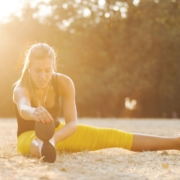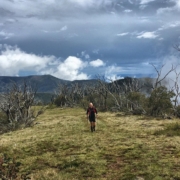The top 5 things that helped me survive my first ultra
A year ago, if you’d have told me I’d take on a 31-hour, non-stop relay event and actually enjoy it, I wouldn’t have just been surprised. I would most likely have responded with hysterical laughter.
Despite having crewed countless ultra-running endurance events, thanks to a couple of ultra-loving individuals you may know (aka the co-founders of V&B Athletic) I’d never, ever contemplated actually doing one. Until I was invited to be part of a team tackling one of the world’s craziest, no-rules races, The Speed Project (TSP).
The mission?
To run from Los Angeles to Las Vegas through Death Valley, a total of 550km, not stopping until you hit the famous “Welcome to Las Vegas” sign.
As a relative newcomer to running, having only taken it up for a milestone birthday a few years back, the entire idea filled me with terror.
Having started with 5km Park Runs, gradually followed by City2Surf, half-marathons and in July last year my first marathon, every fibre of my being wanted to scream “Hell no!” when I was ambushed at the office and asked to join Team 440 for TSP 2020.
But since life’s too short not to challenge yourself, I said yes.
And the rest is history.
For those who’ve always wanted to tackle ultra-running but never dreamed it could be possible… I’m living proof that, with the right training, it absolutely is.
So in the interests of sharing, here are the top five things that helped me get across the finish line intact, and with a huge smile on my face.
Start training early
I can’t stress this one enough. Starting well in advance of your event is the secret to success, and has so many benefits.
It means no last-minute panic, allows you to build up fitness and strength gradually. It also minimises the risk of injury from overload, and ensures you go into the event as physically and mentally prepared as possible, knowing that you’ve done all the hard work prior to race day.
When TSP 2020 was postponed due to the pandemic in March – three days before our team was due to fly out – rather than feeling defeated, I kept on training. With the entire world turned upside down, the routine and structure of a training program during lockdown was a massive sanity-saver.
Also, having the motivation and accountability of my V&B Athletic family to rely on during this time was a total game-changer. There’s no way I would have done this level of training or preparation if left to my own devices.
All I had to do was turn up, train with the group and gradually, over a period of six months – without even realising it – I got fitter, stronger and faster.
The ultimate win-win situation!
If you’re a runner, don’t just run
While it may sound counter-intuitive, the number one thing that improved my running was adding regular strength training into the mix.
While I’d always done RUNCorps Run Club on Tuesday and Thursday mornings, adding STRONGCorps Group Training three times a week took my running speed and endurance to the next level. And the proof was right there on paper in the monthly time trials.
Do I like burpees, push-ups and badger crawls. Um, no!
But once I started to see and feel the results, it became addictive and made every bit of hard work and sweat worth it.
The variety was also key. In addition to 2 running and 3 strength sessions each week, I made sure to squeeze in a social run or yoga on the weekends, coupled with plenty of foam rolling in front on the TV at night. While I was exercising 5-6 times a week, it definitely didn’t feel that way since every session was different, flew by in less than an hour and (I’ve got to admit) was actually fun thanks to the legends who lace up and show up at training each week.
Never underestimate the power of the mind
I’d always looked with awe at ultra-runners and wondered how on earth they kept going: mile after mile, with no sleep and when everything hurts.
Once race day rolled around on September 5 (thanks to The Speed Project morphing into a virtual event, TSP DIY, for the first time) the most valuable thing I learnt first-hand is how incredibly important visualisation, and the power of the mind, can be.
Luckily, I went in prepared having spoken to people who do this kind of thing regularly, including ultra-runner and endurance athlete, Samantha Gash. One of the best pieces of advice she gave me?
Yes, there will be times when you want to stop, when you don’t want to get out of the van and keep running. But remember why you signed up for this, just keep going, and put one foot in front of the other. And when things get tough, think about how good it will feel when you finally cross that finish line.
Samantha Gash
Knowing my team was relying on me to get out there, even at 2 AM, in the freezing Bondi night, meant slipping the shoes back on was so much easier.
Mantras also make a massive difference. The two that helped me the most? “I choose this” and one of Sam’s adventure racing favourites “Team before self”. Sounds slightly woo, but it works.
Eat small and often
Coming in to this event as an ultra-running rookie, one of the things I was most worried about was food.
What to eat.
When to eat it.
And how much to eat to keep your body fuelled, but not weighed down.
I knew I’d done the training. But I was concerned I’d get the crucial nutrition part of the race wrong and end up sick, or running out of steam.
Since I’ve never used gels or powders, I stuck to things I’d used before and knew my body could tolerate when running. For 31 hours and 15 minutes, I basically lived on Vegemite and avocado wraps, salt and vinegar chips, peanut butter Cliff Bars, SOS Hydration and mandarins when I felt like something sweet.
I also treated myself to one coffee on the first morning, and devoured an entire box of Oporto’s hot chips with chicken salt at midnight, thanks to an unexpected delivery from one of our epic support crew. It wasn’t scientific, but by sticking to the rule of eating and drinking something small at every break (even if I didn’t feel particularly hungry or thirsty at the time) I kept powering no problem and felt good the whole way.
Mentally break it down into bite-sized chunks
Last but not least? I broke the two nights of TSP DIY into manageable mental chunks.
I never thought about it as 31 hours and 15 minutes.
Or 62.8km, the total distance I ended up running over that time.
As a team strategy, we aimed to smash out no more than 5km at a time (or 3 laps of the 1-mile loop we ran continuously in Bondi) before tagging the next runner. Which helped enormously as an endurance first-timer. I simply took it one step, one lap and one set at a time.
And, while it sounds ridiculous, I used small incentives, like the thought of what I’d get to eat when I stopped, or the chance to sit in the shade, as motivation.
For example, some of my many mental notes to self went a little something like this:
“Only half a lap to go and, in less than 3 minutes, you’ll be sitting luxuriously in a camp chair downing a cold drink. You can do anything for 3 minutes”.
A few other valuable lessons.
Go into the race with a plan but be flexible and prepared for it to change.
Take energy from your support crew and other runners, and be sure to give the same positive vibes back.
And, most importantly of all, remember to have a good time!
What’s next?
After the TSP DIY experience, it’s safe to say I may now have the ultra-running bug. Next stop, the Stromlo Running Festival in Canberra mid-November. Then, who knows!
Jacqui Mooney is a Sydney-based editor, content director and media consultant. She’s the former editor of Women’s Health Australia and a passionate supporter of women in sport. You can find her on Instagram @jacqmooney
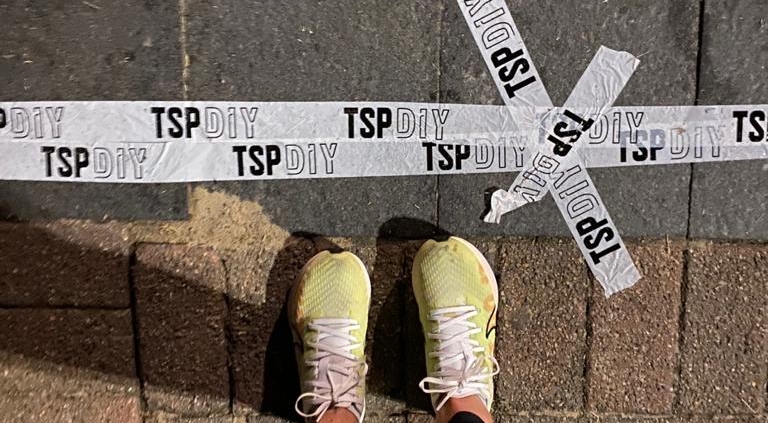
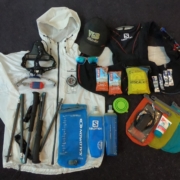 © V&B Athletic
© V&B Athletic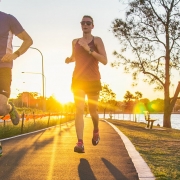 © Pace Athletic
© Pace Athletic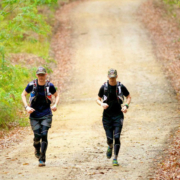 © V&B Athletic
© V&B Athletic
